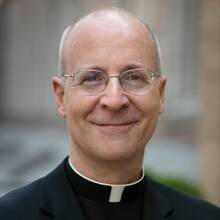 Horror movie, camp classic wannabe or balletomane's dream? Check out Tim Reidy's entirely enjoyable review of Darren Aronofsky's provocative and somewhat controversial new film "Black Swan" for some answers:
Horror movie, camp classic wannabe or balletomane's dream? Check out Tim Reidy's entirely enjoyable review of Darren Aronofsky's provocative and somewhat controversial new film "Black Swan" for some answers:
Is “Black Swan” a ballet film? Though dancers occupy almost every frame of the movie, the description seems inappropriate. Ballet summons images of ineffable grace—the straight line of a leg, a seamless pirouette—yet “Black Swan” is devoid of that sublime spirit. Instead we witness a very different kind of pursuit: the drive to perfection, and the demons that inevitably arise as a result.
And I do mean demons. Viewers looking for to relive the pleasures of “La Danse,” Frederick Wiseman’s 2009 study of the Paris Opera Ballet, are advised to look elsewhere. Directed by Darren Aronofsky, “Black Swan” is essentially a horror movie, though admittedly one with an array of fine-looking monsters.
Case in point: our lead, Nina Sayers, played by the worrisomely lithe Natalie Portman. Nina is an ambitious member of an unnamed New York City ballet company. Ballet is her life, and her mother’s too: when Nina isn’t rehearsing in the studio, she is home with her mother (Barbara Hershey) rehashing the day’s successes and slights. A serious student of her art, Nina isolates herself from the other dancers, eschewing the gossip that brings them together. A rare opportunity presents itself when the company’s brash artistic director, Thomas Leroy (Vincent Cassell), decides to mount a new production of “Swan Lake.” The company’s reigning diva, Beth Macintyre (Winona Ryder), has grown too old for the part, so Leroy is in search of a new Swan Queen.
The part is as plum as they come, and the young dancers (literally) leap at the chance. The backstage backbiting that ensues is brutal: the denizens of HBO’s “Hard Knocks” have nothing on these ladies. When Nina ultimately wins the part, she is at once ebullient and shattered, unsure whether she can handle the high expectations, not to mention the innuendos being hurled at her from her fellow dancers.
Nina is a tender soul to begin with: she is clearly anorexic, a fact common enough in ballet that it merits only a few brief references. She also likes to cut herself, and is haunted by a nefarious doppelgänger, which seems to be a hallucination. Nina has these demons mostly under control at the film’s start, but they are let loose again when she begins the intense rehearsal process. It doesn’t help that Leroy considers her too frigid to play the complex role of the Swan Queen, and pushes her to shake her inhibitions.







